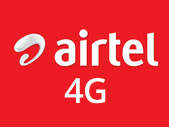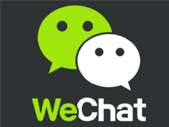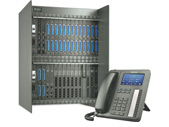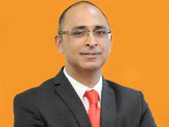|
|
|
Bharti Airtel announces launch of 4G services in Arunachal
 Bharti Airtel Limited, the third largest mobile services provider globally with operations in 20 countries across Asia and Africa, on Saturday announced the commercial launch of its high speed 4G services (also called LTE) here.
Customers are at the very core of everything we do and delivering a compelling experience for them is our foremost priority. Mobile data traffic is soaring in India and users are switching from slower 2G connections to 3G and superior 4G, Bharti Airtel CEO (Assam and NE) Saurabh Goel said. We are launching our 4G services in Itanagar today, looking at the demand for high speed data in the region. Bharti Airtel Limited, the third largest mobile services provider globally with operations in 20 countries across Asia and Africa, on Saturday announced the commercial launch of its high speed 4G services (also called LTE) here.
Customers are at the very core of everything we do and delivering a compelling experience for them is our foremost priority. Mobile data traffic is soaring in India and users are switching from slower 2G connections to 3G and superior 4G, Bharti Airtel CEO (Assam and NE) Saurabh Goel said. We are launching our 4G services in Itanagar today, looking at the demand for high speed data in the region.
Customers will now enjoy blazing Airtel 4G speed across a range of devices, he added. Airtel has led the 4G story in the country, having launched India's first 4G network in Kolkata in April 2012. On August 6 last, Airtel announced that its 4G services were available in 296 towns across the country.
Prior to that, Airtel had successfully conducted trials of its 4G services in select cities and leveraged feedback from customers towards strengthening its service experience, the release said. (Source: Economic Times)
|
Mukesh Ambani, Anil Ambani unite against GSM rivals' proposals to DoT
 The Ambani brothers have joined forces to slam recent proposals of their leading GSM rivals, Bharti AirtelBSE -0.44 %, Vodafone India and Idea CellularBSE 0.10 %, of increasing cost of liberalising CDMA spectrum, which would allow the airwaves to be used for 4G services. The Ambani brothers have joined forces to slam recent proposals of their leading GSM rivals, Bharti AirtelBSE -0.44 %, Vodafone India and Idea CellularBSE 0.10 %, of increasing cost of liberalising CDMA spectrum, which would allow the airwaves to be used for 4G services.
In separate but near identical letters to telecom secretary Rakesh Garg, dated September 18, Mukesh Ambani-owned Reliance Jio Infocomm and Reliance CommunicationsBSE -0.38 %, owned by brother Anil, also criticised their rivals' move to ask the telecom department (DoT) to reduce the amount of CDMA bandwidth, or those in the 800 MHz band, that a company can hold in a circle.
RCom and Reliance Jio have called their rivals' proposals "frivolous, legally unsustainable and anti-consumer," which are also tantamount to bringing about "a retrospective change" in the March 2015 spectrum auction rules. ET has seen these letters.
They were responding to proposals from India's biggest GSM carriers, who had routed their views to Garg last week through their industry lobby body, Cellular Operators' Association of India (COAI). COAI had said that in circles where less than 5MHz of 800 MHz was sold — not enough to offer 4G services — the auction winning price couldn't be taken as the market-linked price.
In its September 16 letter to DoT, COAI had contended that the price discovered for the 800 MHz band in the March 2015 spectrum sale cannot be used as a benchmark for its liberalisation as the quantum of such airwaves auctioned in as many as 12 circles was less than 5 MHz, which, in turn, elicited poor demand as it cannot be used for deploying quality 4G LTE services.
The war of letters comes as the industry gets set for the next stage of battle for higher revenue generating data subscribers, which is driven currently by 3G but expected to be spearheaded by 4G over the next few years. (Source: Economic Times)
|
Intex launches another budget smartphone
 Domestic handset-maker Intex Technologies on Friday launched another budget smartphone - Aqua Power II - at a price of Rs.6,490, thereby expanding its Aqua Power series.The phone will come with a five-inch HD display, 1.3Ghz quad-core processor, a 1 GB RAM and storage capacity of 8GB ROM that can be extended to 32GB. The device will run on the latest Android Lollipop and pack a 4,000 mAh battery. Domestic handset-maker Intex Technologies on Friday launched another budget smartphone - Aqua Power II - at a price of Rs.6,490, thereby expanding its Aqua Power series.The phone will come with a five-inch HD display, 1.3Ghz quad-core processor, a 1 GB RAM and storage capacity of 8GB ROM that can be extended to 32GB. The device will run on the latest Android Lollipop and pack a 4,000 mAh battery.
"We have customized our offerings and have loaded it on an Android Lollipop 5.1 operating system for smoother functioning. This new offering is better, bolder and will compete to be a true stunner, leveraging the signature product category of Intex," Sanjay Kumar Kalirona, mobile business head, Intex Technologies, said. In terms of camera specifications, the phone will house a five-megapixel rear camera unit with LED Flash and a two-megapixel front camera unit. Interestingly, the phone comes with the "Cast Screen" feature which can mirror everything on to a bigger screen.
In addition, the Air Shuffle feature has also been integrated to allow users to operate the phone with simple hand gestures without even touching the screen. (Source: SMETIMES)
|
WeChat hacked, vulnerability fixed by TenCent in new version of app
 WeChat, an instant messaging application by Chinese giant TenCent was hacked. According to statement by TenCent in an official blog post, it said that a vulnerability in the iOS app was exploited in version 6.2.5 of the app. TenCent said the flaw has since been repaired. WeChat, an instant messaging application by Chinese giant TenCent was hacked. According to statement by TenCent in an official blog post, it said that a vulnerability in the iOS app was exploited in version 6.2.5 of the app. TenCent said the flaw has since been repaired.
It advised users to install or upgrade to version 6.2.6 instead. The patched version of the app is currently available on the Apple App Store.
Describing the issue, the statement said: The flaw, described in recent media reports, only affects WeChat v6.2.5 for iOS. Newer versions of WeChat (versions 6.2.6 or greater) are not affected. A preliminary investigation into the flaw has revealed that there has been no theft and leakage of users’ information or money, but the WeChat team will continue to closely monitor the situation.
The WeChat tech team has extensive experience combating attempts to hack our systems. Once the security flaw was discovered, the team immediately took steps to secure against any theft of user information. Users who encounter any issues can contact the team by leaving feedback in the “WeChat Team” WeChat account.
2014 began on a rather sour note for Snapchat, the self-destructing messaging app that gained massive popularity in 2013. Usernames and phone numbers of over 4.6 million Snapchat accounts have found their way online after hackers managed to weasel the data off the service.(Source: Tech.firstpost)
|
Matrix Showcased Its New-Age  Matrix Comsec is a leading manufacturer of state-of-the-art telecom solutions. With an objective of scaling up and penetrating into the Enterprise segment, Matrix is conducting an exclusive product showcase event of its large enterprise IP-PBX- ETERNITY LE. Matrix ETERNITY LE is a compact and thoroughly engineered IP-PBX designed for to serve communication needs of large enterprises. Matrix will be conducting the product exposition in 6 cities in India. The same was conducted on 18th September at Shangri-La's - Eros Hotel, New Delhi. Matrix Comsec is a leading manufacturer of state-of-the-art telecom solutions. With an objective of scaling up and penetrating into the Enterprise segment, Matrix is conducting an exclusive product showcase event of its large enterprise IP-PBX- ETERNITY LE. Matrix ETERNITY LE is a compact and thoroughly engineered IP-PBX designed for to serve communication needs of large enterprises. Matrix will be conducting the product exposition in 6 cities in India. The same was conducted on 18th September at Shangri-La's - Eros Hotel, New Delhi.
ETERNITY LE is a hybrid IP-PBX scalable up to 1344 analog and 999 IP users. During the event Matrix will showcase innovative features of the system and exhibit how it empowers modern enterprises to communicate and collaborate seamlessly. The objective behind this series of exposition is to make existing and prospective system integrators aware about the new-age features of ETERNITY LE and how does it suit the enterprise communication requirements.
ETERNITY LE is powered by cutting-edge technology. This thorough breed solution offers advanced features such as IP telephony, Conferencing, Mobility, Multi-Site, CTI and Unified Messaging. Perfect for Hospitality, Healthcare, Residential Apartments and Corporates, ETERNITY LE streamlines business operations with lower TCO, high return over investment and manages operational expenses in line with the changing needs of organizations.
Adding to the Matrix business plans, Mr. Sagar Gosalia, Sr. Vice President Marketing & Sales at Matrix, said, “Matrix is known for quality and innovative solutions. Our solutions are feature packed and deliver a lot of value to the customers. In line with our legacy of introducing new technology products, we are presenting ETERNITY LE. The idea behind re-introducing the product is to spread the awareness about the product further deeper. ETERNITY LE will surely provide a better viable option to enterprises which were earlier forced to rely upon on overly-priced MNC products so far. It has already gained interest of system integrators and consultants offering technology solutions for large projects and enterprises.” (Source: Convergence Plus Bureau)
|
The truth about hotel rate parity
 Wego, the leading travel search site in the Asia Pacific and Middle East, unravels the myths surrounding online hotel rate parity. “Finding the right hotel and getting a good room rate can be a struggle even for the most seasoned traveller,” said Craig Hewett, Wego co-founder. “I was once chatting to fellow travellers while holidaying with family in Thailand who were boasting about the great rate they’d been able to secure at the hotel. They were rather taken aback when I told them I’d secured the same room for US$50 per night less than what they’d paid.” Wego, the leading travel search site in the Asia Pacific and Middle East, unravels the myths surrounding online hotel rate parity. “Finding the right hotel and getting a good room rate can be a struggle even for the most seasoned traveller,” said Craig Hewett, Wego co-founder. “I was once chatting to fellow travellers while holidaying with family in Thailand who were boasting about the great rate they’d been able to secure at the hotel. They were rather taken aback when I told them I’d secured the same room for US$50 per night less than what they’d paid.”
“Online rate parity, especially in Asia, is a myth,” he added. “There’s a misconception that flights are the big ticket item in a travel itinerary, yet by far the largest costs are attributed to hotels and food and beverage. I was able to save US$350 in total on my Thai accommodation, which equates to another airfare or room service each night.”
Hewett says that many believe that booking directly with a hotel equates to receiving the lowest rate, but it’s not always the case. There’s a few reasons for this.
“Close to 70 per cent of all hotels in Asia are independent and run as small businesses devoid of the pricing sophistication enjoyed by global hotel chains,” he explained. “In many cases they don’t have efficient online booking systems to power their websites, nor the resources to manage fluctuating pricing, but instead need to focus on the huge task of managing hotel operations.”
The result is that third party websites (online travel agents - OTAs) are contracted to help manage and extend their reach online.
“In many cases sites such as booking.com and Expedia have better rates than those advertised on the hotel website as they rely on the OTA to bring in their bookings,” Hewett adds. “OTAs live and breathe the internet; their entire business is online so they’re smart and creative in their merchandising and discounting methods, sometimes using their own commission as a discount mechanism to stay ahead of their competitors.”
The business significance for OTAs is the lifetime value of the customer.
“Because there’s a multitude of price differences for the same room types across all star standard properties online, the best advice is to shop around,” Hewett continued. “That’s where travel search sites who aggregate all the deals in one spot are so helpful.”
“Travellers are beginning to better understand that travel search sites like Wego are not OTAs,” he said. “The travel industry today places so much more emphasis on online bookings in a diverse marketplace, which is the reason we founded Wego, where you’re able to view hundreds of direct hotel rates as well as the variety of prices offered by OTAs, displayed on one site.”
“If there’s not a great deal of difference between an OTA and direct hotel rate, I’d advise to go with the hotel direct. There are small advantages in these cases with less onerous booking restrictions, more flexible cancellation processes, and yes, no booking fees.”
“Do your research and you too could spend the savings on lavish room service, or even cover the cost of an extra airfare for a special someone,” Hewett concluded. (Source: Convergence Plus Bureau)
|
“Evolving Technology: Can India afford to be left behind”
 Inputs by Sandeep Girotra’s (Vice President and Head - India Market at Nokia Networks) at his inaugural speech at the CII Telecom Convergence Summit 2015 Inputs by Sandeep Girotra’s (Vice President and Head - India Market at Nokia Networks) at his inaugural speech at the CII Telecom Convergence Summit 2015
“Technology today has become as essential as water, house and electricity! We cannot imagine our lives without technology. We can re-imagine a world where technology blends into our lives. Technology that works for us, discreetly yet magically in the background, enriches our lives. Effortless, simple, and intuitive technology which enables new and extraordinary experiences in people’s lives each day.
At Nokia we see this world as a “Programmable World”. Whether it’s for entertainment, utility, health, transportation etc. – the programmable world today and will have a big impact on humankind. This is what we at Nokia like to call as the “Human Possibilities of Technology.” For eg: for Utility & Transportation - technology can help expand the human possibilities of the connected world today. However the underlying force to such possibilities is a robust, ubiquitous and omnipresent connectivity network.
Digital India key building blocks are universal broadband connectivity across urban and rural areas to enable e-governance and e-services availability to all. Connectivity along with Smart Applications will enable delivery of e-services and e-Governance to Citizens and IoT eco-system will play a key role to make this happen, especially for application in connected mobility, smart cities, healthcare, industry and Public Safety areas. We are at the cusp of very interesting time in India. To make Digital India successful we need a robust, and possibly a never seen before level of telecom infrastructure given the diversity, complexity and expanse of India.
I strongly believe that the Digital India initiative can make a great difference to the country right now. To accomplish a truly Digital India, the government must start by building on the infrastructure that is already in place, and integrating the right technology — to accelerate the delivery of services that create a more connected society.” (Source: Convergence Plus Bureau)
|
Notify rules for mobile tower installation on government property: Assocham

The Department of Telecom should come out with rules on installation of mobile towers on government property in order to facilitate the process and reduce call drops, industry body Assocham has demanded. Though government has the intention to provide access to its properties, clear plan and guidelines to operationalise it are needed, the chamber said.
"Detailed implementation plans and procedures may kindly be notified for the availability of government properties for tower installations all over India," Assocham Nation Council on Telecommunications Chairman T V Ramachandran told PTI.
The Department of Telecom (DoT) and Urban Development Ministry have agreed in-principle to permit installation of mobile towers at government buildings, a move that is expected to reduce the problem of call drops.
"Telecom Minister Ravi Shankar Prasad has taken a historic initiative with Urban Development Ministry to allow use of government properties for installation of mobile towers. In the 20 odd years of mobile era in India, this is the first such bold step to advance connectivity," Ramachandran said. Telecom companies have faced protest from residents in various locations against installation of mobile towers as they fear radiation from towers can adversely impact their health.
Availability of government buildings for installing mobile towers comes as a big boon for telecom operators who have been in the line of fire for increasing call drops. (Source: Economic Times)
|
DoT exempts short range microphones, radars from licensing
 Government has exempted use of wireless frequencies from licensing requirement for short-range microphones like cordless phones, radars, contact less cards and similar products. The Wireless Planning and Coordination Wing -- the custodian of spectrum -- in its latest notification exempted very low power equipment for wireless microphones, that can be used in the frequency band of 36 to 38 MHz, from licensing. Government has exempted use of wireless frequencies from licensing requirement for short-range microphones like cordless phones, radars, contact less cards and similar products. The Wireless Planning and Coordination Wing -- the custodian of spectrum -- in its latest notification exempted very low power equipment for wireless microphones, that can be used in the frequency band of 36 to 38 MHz, from licensing.
Government has exempted use of wireless frequencies from licensing requirement for short-range microphones like cordless phones, radars, contact less cards and similar products. The Wireless Planning and Coordination Wing -- the custodian of spectrum -- in its latest notification exempted very low power equipment for wireless microphones, that can be used in the frequency band of 36 to 38 MHz, from licensing.
"Microphones in this frequency band are generally used in handheld devices that are used commonly at the time of event management or cordless phones within a premise. The notification will ease import and use of such devices," international telecom regulatory expert S N Gupta told PTI.
The WPC, which is under the Department of Telecom, has exempted use of short range radar systems in a frequency band of 76 to 77 GHz which are generally used as sensors in automotive vehicles to implement safety features such as collision warning, lane change assistance, blind-spot detection and pedestrian protection."These devices are not being made in India at present but the rule with ease of doing business will facilitate in building eco-system around these devices," Gupta said.
The new notification eases use of contact less smartcards, microwave oven in 302 to 351 kHz frequency band, he added. As per the notification, equipment including the Radio Frequency Identification Devices operating in 433 to 434.79 MHz will also be exempted from licensing. (Source: Economic Times)
|
Visa shelves mobile payment venture in India as telecom companies refuse to share their network
 “Technology today has become as essential as water, house and electricity! We cannot imagine our lives without technology. We can re-imagine a world where technology blends into our lives. Technology that works for us, discreetly yet magically in the background, enriches our lives. Effortless, simple, and intuitive technology which enables new and extraordinary experiences in people’s lives each day. “Technology today has become as essential as water, house and electricity! We cannot imagine our lives without technology. We can re-imagine a world where technology blends into our lives. Technology that works for us, discreetly yet magically in the background, enriches our lives. Effortless, simple, and intuitive technology which enables new and extraordinary experiences in people’s lives each day.
Visa, one of the largest payment companies in the world, has junked its mobile payment venture in India after leading telecom companies refused to share their network. The company Movida India, the joint venture that Visa had formed five years ago in partnership with Monitise Plc UK, has shut shop and Naushad Contractor, head of the 50:50 JV, has quit, three persons aware of the development told ET.
Visa had set up a customised platform using Monitise software that could be used by banks to offer their customers mobile payment services. Visa, which felt the platform would add to its card transaction volumes, had tied up with leading banks like ICICI and HDFC. But the missing link was a deal with large mobile service providers.
For the past few years, Visa had been lobbying with the government, Reserve Bank of India and telecom regulator for allowing it to tap the Unstructured Supplementary Service Data (USSD) channel of telcos.(Source: Economic Times)
|
 Bharti Airtel Limited, the third largest mobile services provider globally with operations in 20 countries across Asia and Africa, on Saturday announced the commercial launch of its high speed 4G services (also called LTE) here.
Customers are at the very core of everything we do and delivering a compelling experience for them is our foremost priority. Mobile data traffic is soaring in India and users are switching from slower 2G connections to 3G and superior 4G, Bharti Airtel CEO (Assam and NE) Saurabh Goel said. We are launching our 4G services in Itanagar today, looking at the demand for high speed data in the region.
Bharti Airtel Limited, the third largest mobile services provider globally with operations in 20 countries across Asia and Africa, on Saturday announced the commercial launch of its high speed 4G services (also called LTE) here.
Customers are at the very core of everything we do and delivering a compelling experience for them is our foremost priority. Mobile data traffic is soaring in India and users are switching from slower 2G connections to 3G and superior 4G, Bharti Airtel CEO (Assam and NE) Saurabh Goel said. We are launching our 4G services in Itanagar today, looking at the demand for high speed data in the region.
 The Ambani brothers have joined forces to slam recent proposals of their leading GSM rivals, Bharti AirtelBSE -0.44 %, Vodafone India and Idea CellularBSE 0.10 %, of increasing cost of liberalising CDMA spectrum, which would allow the airwaves to be used for 4G services.
The Ambani brothers have joined forces to slam recent proposals of their leading GSM rivals, Bharti AirtelBSE -0.44 %, Vodafone India and Idea CellularBSE 0.10 %, of increasing cost of liberalising CDMA spectrum, which would allow the airwaves to be used for 4G services.  Domestic handset-maker Intex Technologies on Friday launched another budget smartphone - Aqua Power II - at a price of Rs.6,490, thereby expanding its Aqua Power series.The phone will come with a five-inch HD display, 1.3Ghz quad-core processor, a 1 GB RAM and storage capacity of 8GB ROM that can be extended to 32GB. The device will run on the latest Android Lollipop and pack a 4,000 mAh battery.
Domestic handset-maker Intex Technologies on Friday launched another budget smartphone - Aqua Power II - at a price of Rs.6,490, thereby expanding its Aqua Power series.The phone will come with a five-inch HD display, 1.3Ghz quad-core processor, a 1 GB RAM and storage capacity of 8GB ROM that can be extended to 32GB. The device will run on the latest Android Lollipop and pack a 4,000 mAh battery. WeChat, an instant messaging application by Chinese giant TenCent was hacked. According to statement by TenCent in an official blog post, it said that a vulnerability in the iOS app was exploited in version 6.2.5 of the app. TenCent said the flaw has since been repaired.
WeChat, an instant messaging application by Chinese giant TenCent was hacked. According to statement by TenCent in an official blog post, it said that a vulnerability in the iOS app was exploited in version 6.2.5 of the app. TenCent said the flaw has since been repaired. Matrix Comsec is a leading manufacturer of state-of-the-art telecom solutions. With an objective of scaling up and penetrating into the Enterprise segment, Matrix is conducting an exclusive product showcase event of its large enterprise IP-PBX- ETERNITY LE. Matrix ETERNITY LE is a compact and thoroughly engineered IP-PBX designed for to serve communication needs of large enterprises. Matrix will be conducting the product exposition in 6 cities in India. The same was conducted on 18th September at Shangri-La's - Eros Hotel, New Delhi.
Matrix Comsec is a leading manufacturer of state-of-the-art telecom solutions. With an objective of scaling up and penetrating into the Enterprise segment, Matrix is conducting an exclusive product showcase event of its large enterprise IP-PBX- ETERNITY LE. Matrix ETERNITY LE is a compact and thoroughly engineered IP-PBX designed for to serve communication needs of large enterprises. Matrix will be conducting the product exposition in 6 cities in India. The same was conducted on 18th September at Shangri-La's - Eros Hotel, New Delhi. Wego, the leading travel search site in the Asia Pacific and Middle East, unravels the myths surrounding online hotel rate parity. “Finding the right hotel and getting a good room rate can be a struggle even for the most seasoned traveller,” said Craig Hewett, Wego co-founder. “I was once chatting to fellow travellers while holidaying with family in Thailand who were boasting about the great rate they’d been able to secure at the hotel. They were rather taken aback when I told them I’d secured the same room for US$50 per night less than what they’d paid.”
Wego, the leading travel search site in the Asia Pacific and Middle East, unravels the myths surrounding online hotel rate parity. “Finding the right hotel and getting a good room rate can be a struggle even for the most seasoned traveller,” said Craig Hewett, Wego co-founder. “I was once chatting to fellow travellers while holidaying with family in Thailand who were boasting about the great rate they’d been able to secure at the hotel. They were rather taken aback when I told them I’d secured the same room for US$50 per night less than what they’d paid.” Inputs by Sandeep Girotra’s (Vice President and Head - India Market at Nokia Networks) at his inaugural speech at the CII Telecom Convergence Summit 2015
Inputs by Sandeep Girotra’s (Vice President and Head - India Market at Nokia Networks) at his inaugural speech at the CII Telecom Convergence Summit 2015
 Government has exempted use of wireless frequencies from licensing requirement for short-range microphones like cordless phones, radars, contact less cards and similar products. The Wireless Planning and Coordination Wing -- the custodian of spectrum -- in its latest notification exempted very low power equipment for wireless microphones, that can be used in the frequency band of 36 to 38 MHz, from licensing.
Government has exempted use of wireless frequencies from licensing requirement for short-range microphones like cordless phones, radars, contact less cards and similar products. The Wireless Planning and Coordination Wing -- the custodian of spectrum -- in its latest notification exempted very low power equipment for wireless microphones, that can be used in the frequency band of 36 to 38 MHz, from licensing. “Technology today has become as essential as water, house and electricity! We cannot imagine our lives without technology. We can re-imagine a world where technology blends into our lives. Technology that works for us, discreetly yet magically in the background, enriches our lives. Effortless, simple, and intuitive technology which enables new and extraordinary experiences in people’s lives each day.
“Technology today has become as essential as water, house and electricity! We cannot imagine our lives without technology. We can re-imagine a world where technology blends into our lives. Technology that works for us, discreetly yet magically in the background, enriches our lives. Effortless, simple, and intuitive technology which enables new and extraordinary experiences in people’s lives each day. 





